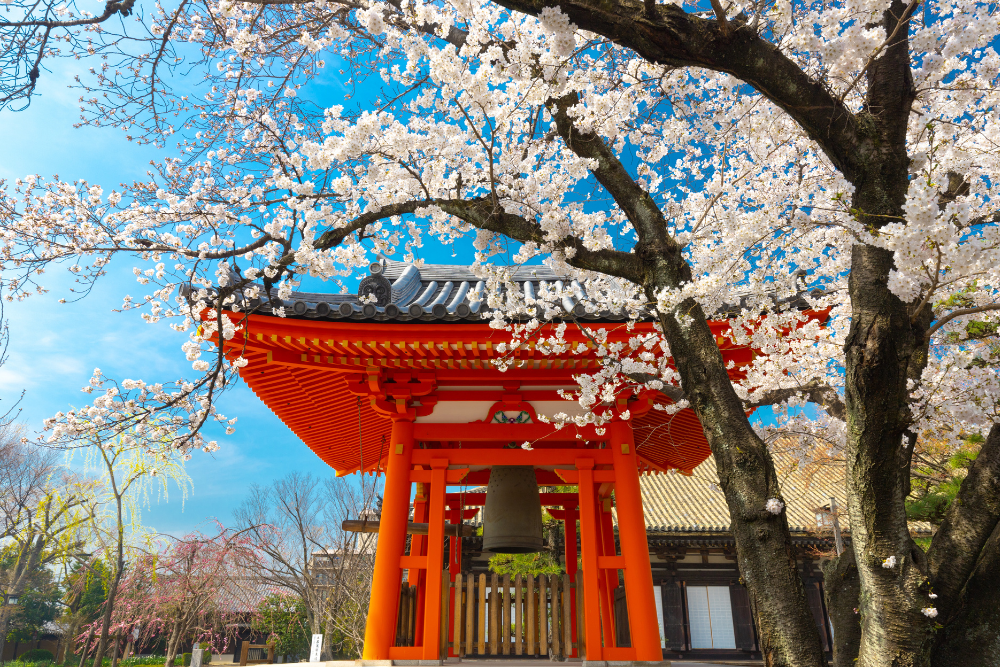Japan is a country that celebrates the changing seasons with spectacular matsuri (festivals), each reflecting its deep-rooted traditions, Shinto and Buddhist influences, and local customs. From the vibrant cherry blossom festivals in spring to the lantern-lit celebrations of autumn, these events offer a glimpse into Japan’s rich cultural heritage.
This guide explores Japan’s most significant seasonal festivals, their history, key locations, and how to experience them.
Spring Festivals (March – May) 🌸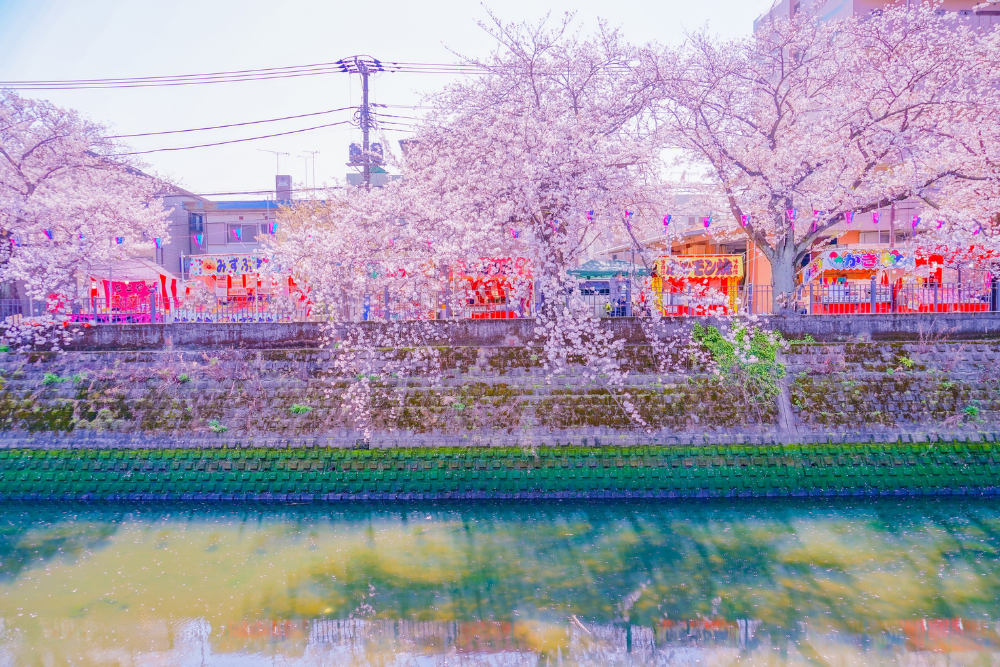
Spring in Japan is synonymous with cherry blossoms, renewal, and vibrant celebrations. Many festivals during this season revolve around nature, purification rituals, and welcoming warmer weather.
1. Hanami Festivals (Late March – Early April)
Where: Nationwide (Kyoto, Tokyo, Osaka, Hiroshima, Nara)
Highlights:
- Viewing cherry blossoms (sakura) in full bloom at parks and temples.
- Enjoying hanami picnics under the blossoms with food and sake.
- Illuminated nighttime cherry blossom events (yozakura) in major cities.
Best Hanami Spots:
- Shinjuku Gyoen (Tokyo) – A mix of early and late-blooming cherry trees.
- Maruyama Park (Kyoto) – Famous for its weeping cherry tree illumination.
- Himeji Castle (Hyogo) – Stunning views of sakura surrounding a UNESCO-listed castle.
2. Takayama Spring Festival (April 14–15)
Where: Takayama, Gifu Prefecture
Highlights:
- Elaborate festival floats (yatai) adorned with gold and intricate carvings.
- Nighttime processions with lantern-lit floats parading through the historic town.
- Traditional karakuri (mechanical puppet performances).
3. Sanja Matsuri (Third Weekend of May)
Where: Asakusa, Tokyo (Senso-ji Temple)
Highlights:
- One of Tokyo’s wildest and most energetic festivals.
- More than 100 portable shrines (mikoshi) paraded through Asakusa.
- Participants wearing traditional happi coats and chanting loudly.
Summer Festivals (June – August) 🌞
Summer in Japan is filled with lively matsuri, fireworks, and traditional dance events, making it the most festive season of the year.
4. Gion Matsuri (July 1–31, Parade on July 17 & 24)
Where: Kyoto
Highlights:
- One of Japan’s most famous festivals, dating back to the 9th century.
- The Yamaboko Junko parade features massive festival floats (yamaboko).
- Yoiyama nights (July 14–16, 21–23) allow visitors to explore festival food stalls.
5. Tenjin Matsuri (July 24–25)
Where: Osaka
Highlights:
- Celebrates Sugawara no Michizane, the deity of learning.
- Boat processions on the Okawa River with illuminated lanterns.
- A spectacular fireworks display over the water.
6. Tanabata (Star Festival) (July 7 or August 7)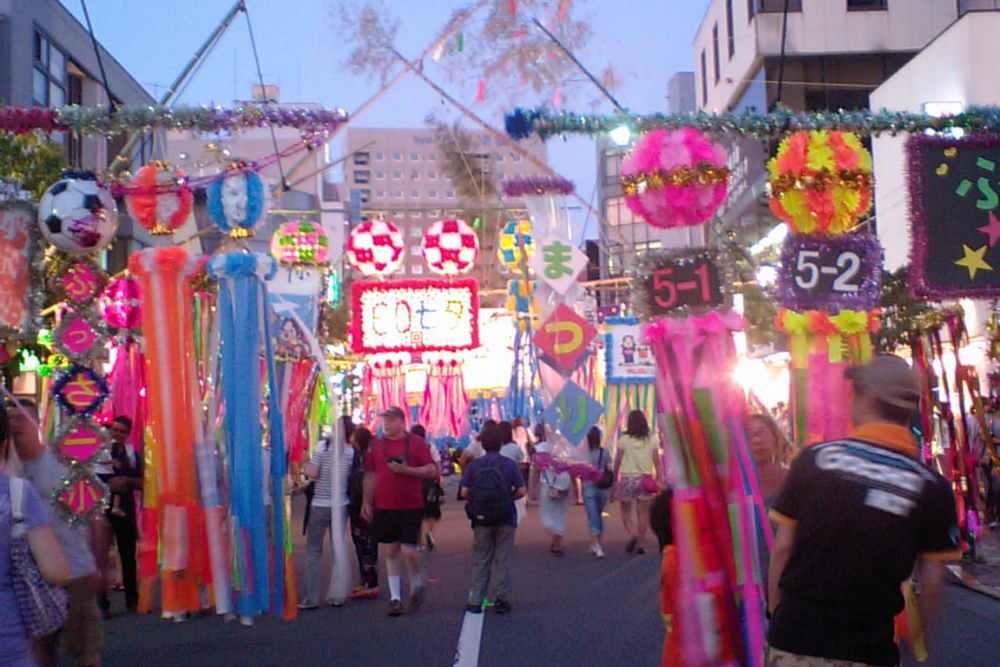
Where: Sendai, Hiratsuka, Asakusa, and nationwide
Highlights:
- Inspired by the legend of Orihime and Hikoboshi, two celestial lovers separated by the Milky Way.
- Colorful paper wishes (tanzaku) hung on bamboo trees.
- Sendai Tanabata Festival (August 6–8) is the largest and most famous version.
7. Awa Odori (August 12–15)
Where: Tokushima, Shikoku
Highlights:
- Japan’s largest traditional dance festival, dating back 400 years.
- Groups of dancers wearing yukata and straw hats perform energetic, synchronized moves.
- Visitors can join the dance during special segments.
8. Sumida River Fireworks Festival (Last Saturday of July)
Where: Tokyo (Sumida River, near Asakusa)
Highlights:
- Japan’s oldest fireworks festival, dating back to 1733.
- Over 20,000 fireworks light up the Tokyo skyline.
- Locals wear yukata (summer kimono) and enjoy festival food.
Autumn Festivals (September – November) 🍁
Autumn is a season of harvest, moon-viewing, and vibrant foliage, with festivals focusing on gratitude and reflection.
9. Kishiwada Danjiri Matsuri (Mid-September)
Where: Kishiwada, Osaka
Highlights:
- One of Japan’s most intense festivals, where teams pull massive wooden floats (danjiri) through narrow streets at high speed.
- Spectacular acrobatics on top of the floats.
- Celebrates community strength and perseverance.
10. Jidai Matsuri (October 22)
Where: Kyoto
Highlights:
- A historical reenactment parade showcasing costumes from different eras of Kyoto’s history.
- More than 2,000 participants, including samurai, court nobles, and geisha.
- Celebrates Kyoto’s rich cultural heritage.
11. Takayama Autumn Festival (October 9–10)
Where: Takayama, Gifu
Highlights:
- Similar to the spring Takayama Festival, but with an autumnal atmosphere.
- Floats illuminated by hundreds of lanterns.
- A harvest celebration with traditional performances.
Winter Festivals (December – February) ❄️
Winter festivals in Japan celebrate snow, light, and spiritual purification, offering a mix of stunning illuminations and traditional rituals.
12. Chichibu Night Festival (December 2–3)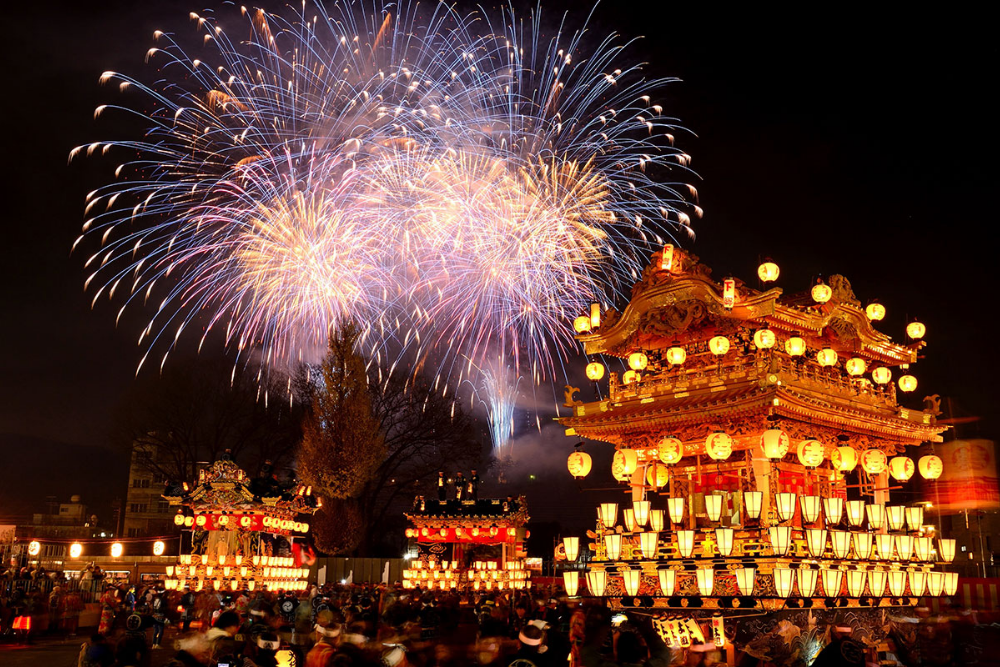
Where: Chichibu, Saitama (Near Tokyo)
Highlights:
- Japan’s most famous winter festival, featuring huge gold-embellished floats.
- Fireworks display in winter, a rare sight in Japan.
- One of the top three float festivals in Japan.
13. Sapporo Snow Festival (Early February)
Where: Sapporo, Hokkaido
Highlights:
- Giant snow and ice sculptures, some towering over 15 meters high.
- Ice sculpture competitions featuring international artists.
- Illuminated ice bars, snow slides, and skating rinks.
14. Otaru Snow Light Path Festival (Early February)
Where: Otaru, Hokkaido
Highlights:
- Candle-lit lanterns and snow sculptures along the historic Otaru Canal.
- A romantic, magical winter atmosphere.
- A quieter alternative to the Sapporo Snow Festival.
15. Setsubun (February 3–4)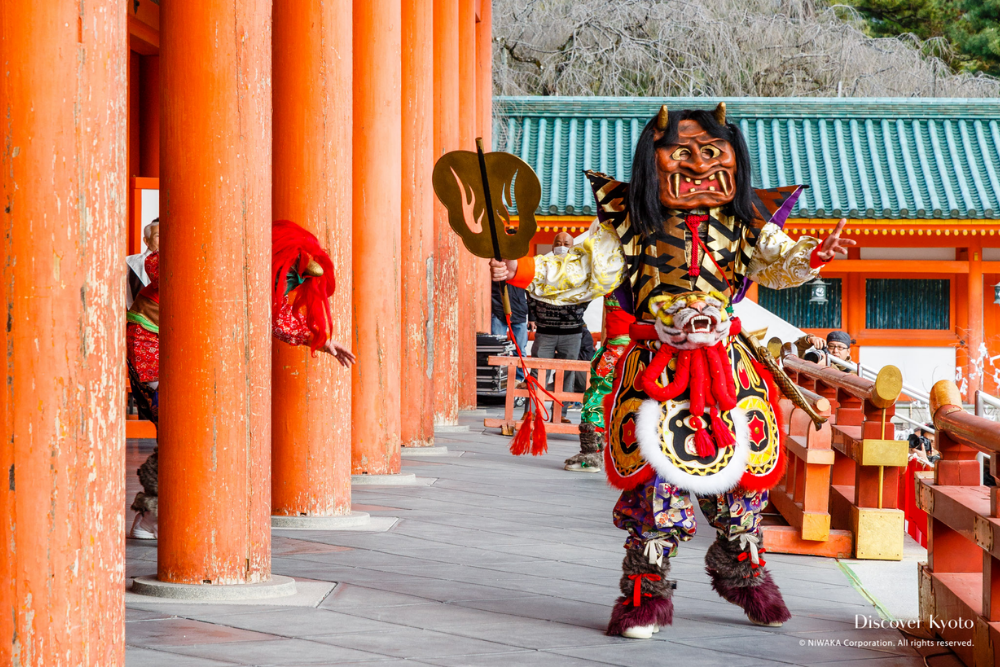
Where: Nationwide (Kyoto’s Yasaka Shrine, Tokyo’s Senso-ji)
Highlights:
- Bean-throwing ceremonies (mamemaki) to ward off evil spirits.
- People shout “Oni wa soto! Fuku wa uchi!” (“Demons out! Fortune in!”) while throwing roasted soybeans.
- Temples and shrines hold large-scale celebrations with celebrity guests.
Conclusion
Japan’s seasonal festivals offer an incredible way to experience the country’s deep-rooted traditions, community spirit, and natural beauty. Whether you want to see cherry blossoms in Kyoto, fireworks in Tokyo, or snow sculptures in Sapporo, each festival provides a unique cultural experience that enhances any visit to Japan.
For an authentic Japanese experience, plan your trip around these vibrant celebrations and immerse yourself in the timeless magic of Japan’s festivals.



